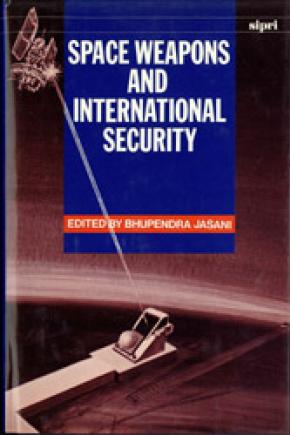Space Weapons and International Security
The effort of the United States to develop defences against ballistic missiles (the Strategic Defense Initiative) is one of the most hotly debated topics of our time. This authoritative book contributes to the debate by presenting the searching and wide-ranging views of twenty-six international experts on the technical, legal, political, and military aspects of space weapons. They address such questions as: What are the technological promises and problems of strategic defence? What effects will SDI have on the arms race, on the development of anti-satellite weapons, and on deterring a nuclear war? How will SDI affect the arms control process? Can the USA entice the USSR to co-operate in deploying strategic defences? What are the implications for NATO? How do China, India, and Japan perceive SDI? If both superpowers develop space weapons will they become 'sheriffs of the high frontier'? What can be done to guard international stability? These papers, which express every range of opinion on SDI, from an unqualified approval to total scepticism, are prefaced by an overview by the editor of the volume.
Part I. Space weapons and international security—an overview
Bhupendra Jasani
1. Introduction
2. Systems related to space weapons
3. Space weapons—technical aspects
4. Can space weapons be controlled?
5. Space weapons—international dimensions
6. Conclusions
Part II. Technical aspects of space weapons
Paper 1. Technical issues for strategic defence research
Stephen D. Rockwood
Paper 2. Enforcing BMD against a determined adversary?
Richard L. Garwin
Paper 3. 'Star Wars' down to earth: A technical operational and bureaucratic assessment
Kosta Tsipis
Paper 4. Measures for counteracting space strike weapons
Andrei A. Kokoshin, Alexei A. Vassiliev and Mikhail Gerasyov
Paper 5. Sub-systems of battle management for an echeloned space-based anti-missile system
Andrei A. Kokoshin, Viktor M. Sergeyev and Alexei A. Vassiliev
Part III. Space weapons vs deterrence: Policies and arms control
Paper 6. Defending versus avenging: A critical assessment of SDI and MAD policies
Barry R. Schneider and Colin S. Gray
Paper 7. Implications of change from MAD to defensive policies
Sydney D. Drell
Paper 8. Implications of US and Soviet BMD programmes for the ABM Treaty
John B. Rhinelander
Paper 9. The ABM Treaty: To be or not to be
Sune Danielsson
Paper 10. Preventing the militarization of space: Is it necessary or possible?
Alexey G. Arbatov and Boris G. Mayorski
Paper 11. Possible ASAT arms control agreements
Walter Slocombe
Paper 12. Space weapon verification
Donald M. Kerr
Part IV. International dimension
Paper 13. Implications of SDI for NATO and possibilities of agreement
Sanford A. Lakoff
Paper 14. Strategic defences: Facts and opinions
Ronald Mason
Paper 15. How new ASAT and BMD developments could affect third countries
Benoit d'Aboville and Michel Guionnet
Paper 16. The impact of SDI on international security
Yao Wenbin
Paper 17. Implications of high technology for disarmament
Ryukichi Imai
Part V. Politics of space weapons
Paper 18. The Soviet attitude to strategic defence
Yevgeniy Velikhov
Paper 19. The strategic context of SDI: A US assessment of Soviet attitudes towards mutual vulnerability
Frank Gaffney
Paper 20. SDI from the viewpoint of non-aligned nations
Mujkund Dubey
Paper 21. Strategic defence in Western Europe
John Wilkinson
Appendix 1. Treaties and treaty proposals which contain provisions aimed at some form of arms control in space
Appendix 2. Special report on strategic defence
Appendix 3. Opening address by Birgitta Dahl, Swedish Minister of Energy
Appendix 4. Conference delegates
Appendix 5. Further reading

